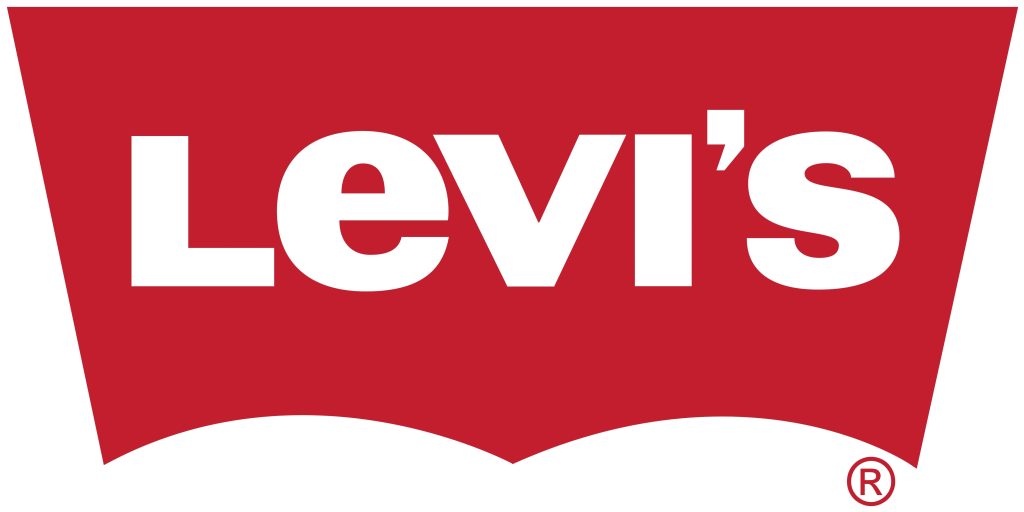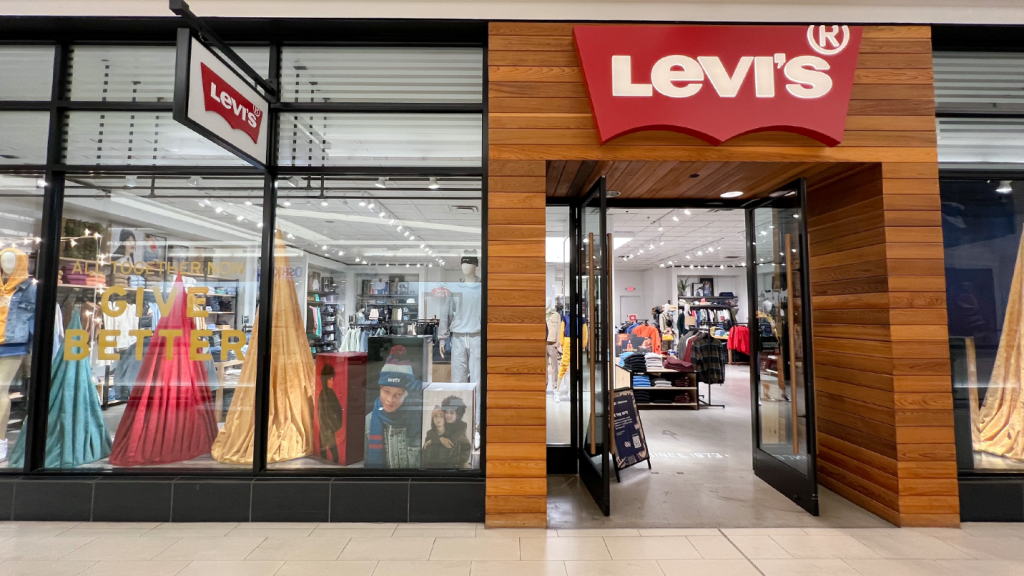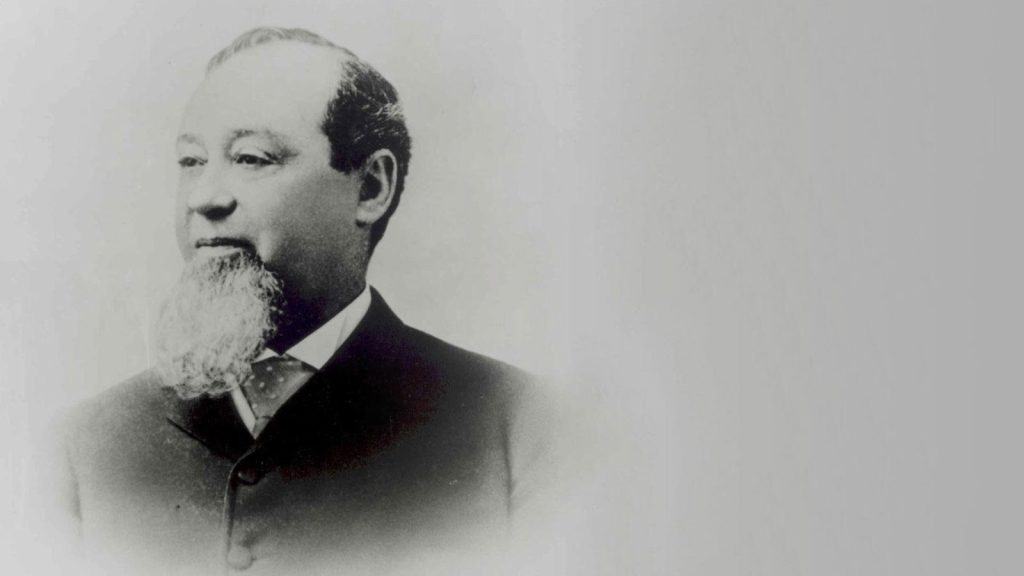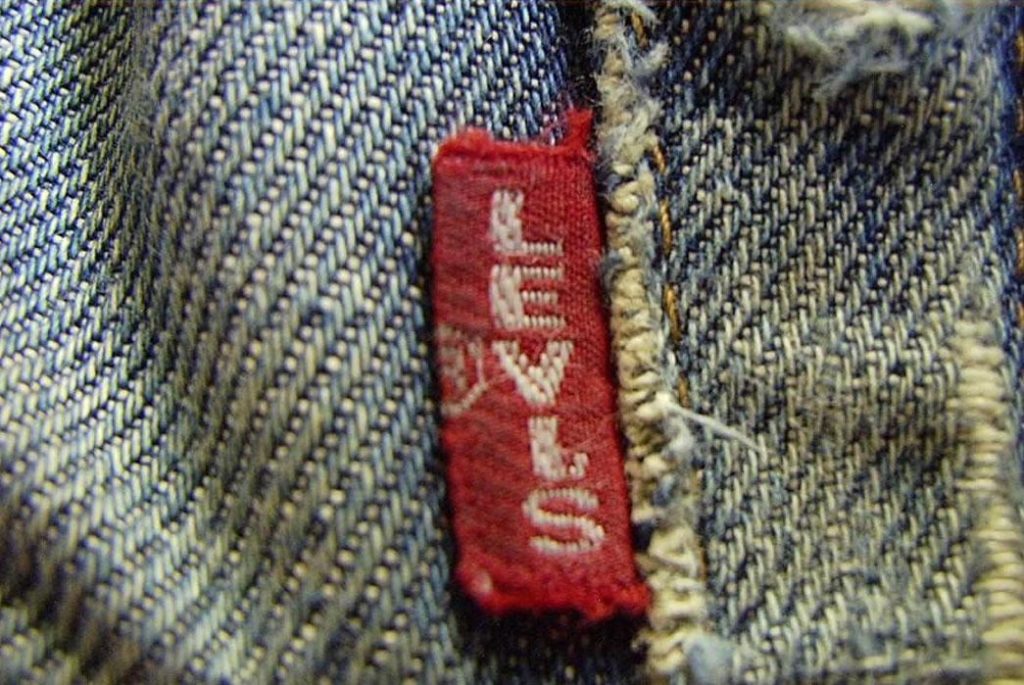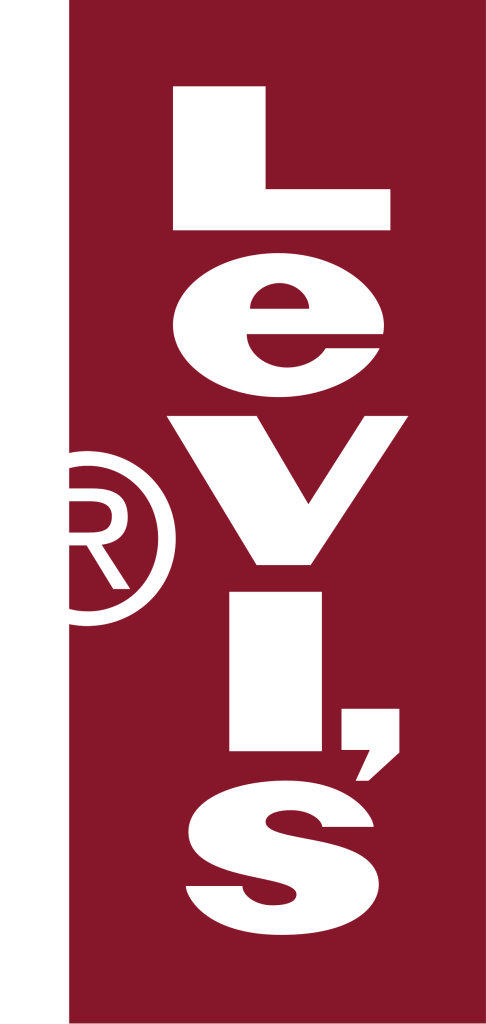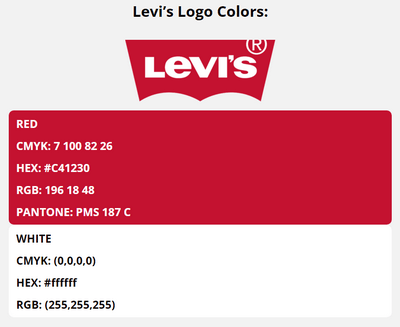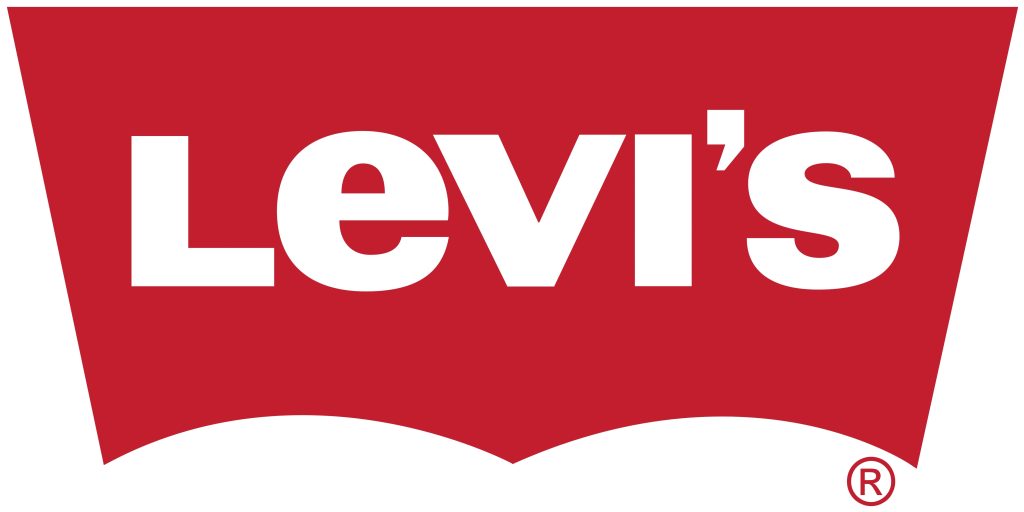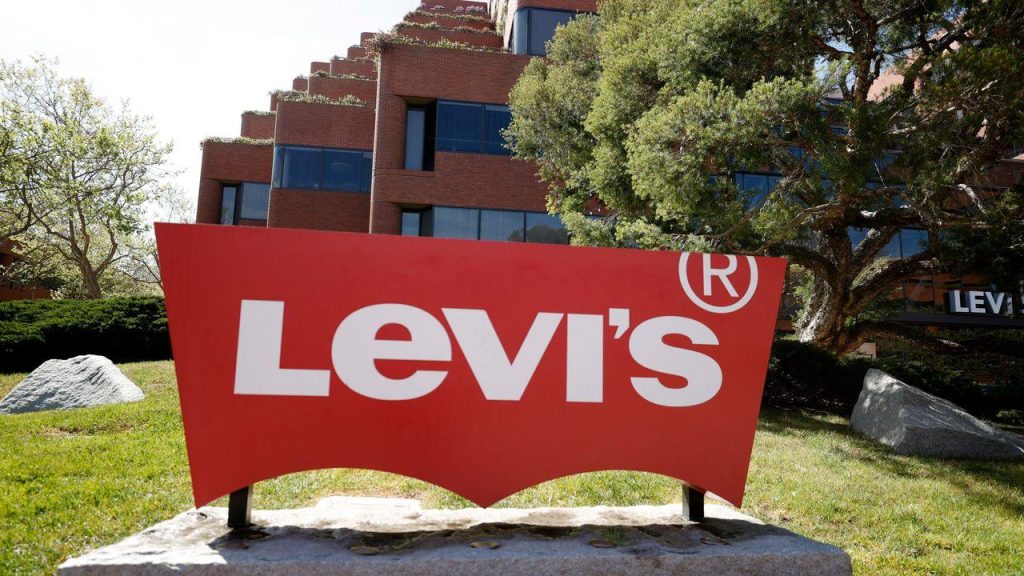For so many of us, the way we dress is a way to express ourselves. And one of the most important things we all love having is a good-fitting pair of jeans. Levi’s has been a denim staple since 1853, and what has kept people loving the brand is Levi’s can still create perfectly fitting jeans even after all those years.
With most brands, though, having a product that people go crazy for isn’t always enough. Companies also need a logo that can help these people identify that a great product is tied to that particular brand, which is something Levi’s has done right.
Whether the 501®’s, 505®’s, or another pair of jeans is your favorite Levi’s product, all of Levi’s products have something in common – they are all branded with Levi’s iconic logo. Throughout the remainder of this article, we’ll walk you through this popular denim brand and how its logo has evolved over the years.
Meet Levi’s
If you walked through a shopping mall or outlet center, chances are you would encounter a Levi’s storefront. The brand has grown in both popularity and physical real estate since it was first founded in San Francisco back in 1853.
When Levi Strauss founded his namesake brand, Levi’s was the first company of its kind. No other business was established to manufacture blue denim pants, and as the company started, Levi sold this product that he and his partner, Jacob Davis created, to gold miners.
Levi was no stranger to this clientele. Before creating denim, Levi sold other fabrics and products to these miners. Following the Gold Rush, Levi then grew his sales to railroad workers and those working in more rugged industries.
By the 1950s, Levi’s became much bigger than this, though, and became a staple item in closets across the United States. As you’ll see later in this article, the Levi’s brand has grown to be a worldwide operation generating upwards of $5 billion annually.
The Evolution of Levi’s
1853-1873: The early days of Levi Strauss & Co.
Levi’s was founded in 1853 in San Francisco by Levi Strauss, a German-born American businessman. Levi was brought to California during the Gold Rush, and before selling his denim to the gold miners, Levi sold dry goods.
Two decades after Levi Strauss & Co. was established, the brand’s iconic blue jeans were designed. With these blue jeans came a patent for an “Improvement in Fastening Pocket-Openings,” which we refer to today as a button. This addition to the blue jeans allowed for the jeans to be more durable for their early clientele.
It’s important to note that Levi’s wasn’t born on its own. Strauss’ key partner was Jacob Davis, a skilled tailor who was critical in creating the denim designs that Levi dreamed up. The partnership worked seamlessly (no pun intended). Jacob had the tailoring skills, and Levi had the vision and the fabrics to provide.
1934-1936: Levi’s fine tunes its products
Before 1934, Levi’s were only designed for men. In 1934, the brand expanded its denim to also include a women’s line featuring the brand’s signature blue jeans for women. Around this same time, in 1936, Levi’s also decided to add a red tag to the right side back pocket of its 501® jeans to help identify Levi’s jeans versus a competitor’s.
1965: Levi’s expands overseas
There was no denying that Levi’s became popular in the United States fast. Given this national growth, the company decided to expand overseas, setting up offices across Europe and Asia.
The early 1980s – early 1990s: Levi’s sets an example for social good
As the global AIDS crisis was unfolding, the Levi Strauss Foundation began to match donations made at San Francisco General Hospital. Another step the brand took to support its employees was through setting up support groups at the brand’s headquarters in San Francisco for any employee that tested HIV+.
Levi’s didn’t stop there, though. In the early 1990s, Levi Strauss & Co. was the first global apparel business to set up a code of conduct for all factories and licensees. This code of conduct covered everything from child labor to wages to discrimination, ethical standards, working hours, health, safety, and so much more.
1986: Levi’s revolutionizes a different pant
It was clear that Levi’s understood how to construct superb-fitting denim pants, so the company took what it knew and decided to construct khaki pants. These pants were something that working professionals in office settings could wear daily, making the Levi’s brand fitting no matter what your day entailed.
2003-Today: Levi’s continues to be our favorite innovative denim brand
From creating the Signature by Levi’s jeans in 2003 to creating an innovation lab in 2013, Levi’s hasn’t shown any sign of slowing down.
The brand even unveiled a new denim line, the 700 series, that rivals everybody’s favorite 501® jeans. Beyond jeans, though, Levi’s sells a wide range or clothing, from shirts, coats, dresses, accessories, and everything else in between.
Roadblocks Along the Way
Throughout Levi’s history, the brand didn’t have any substantial challenges that were unusual for a retail brand. The usual challenges that come with a retail operation are evolving with different fashion trends, which Levi’s has been able to do.
While the company has experienced its share of declines, Levi’s has still been able to have upbeat sales outlooks year after year. The other common retail challenge the brand has endured is the appearance of counterfeit jeans, claiming they are Levi’s.
It’s easy to tell the difference between real and fake Levi’s jeans, though, because it’s hard to mimic the durable, high quality of Levi’s denim.
The Meaning of Levi’s Logo and Levi’s Logo History
With a company that has been around for nearly 170 years, it comes as no surprise that this company has also had its share of different logos. Below we’ll walk you through each of Levi’s logos over the last ~170 years.
1853-1892: The first version of the Levi’s logo
When Levi’s was first founded, it was founded as a dry goods seller versus a denim retailer. This logo reflects the early days of the brand, featuring the Levi Strauss & Co. wordmark. This wordmark showcases the founder’s name. The simplicity of this logo design allowed for the brand to grow and allowed for a time when Levi decided on his niche without being tied down to one industry.

1925-1929: The third version of the Levi’s logo
After more than twenty years of using its picture logo, Levi’s returned to a simplified wordmark. This design spelled out the brand name in bold, thick, red lettering. This logo stood out, and it was during a time the brand would begin unveiling new product after product. This simpler design was easier to recreate on a mass scale alongside its jeans, helping to build brand recognition.
1892-1925: The second version of the Levi’s logo
As Levi and Jacob created their patented blue jean, this set the company in a clear direction, and the duo wanted a logo that highlighted their product. This logo was a detailed picture that included two horses, each facing a different direction, with a pair of blue jeans between them. The logo includes a lot of writing, the brand name, the name of their product, their patent date, and the words, “Every Garment Guaranteed.” This font was intricate and resembled the font you would see on a circus poster. The intricacy of this logo allowed for it to not only stand out but to see what the brand was about even if you couldn’t read the logo’s words. This logo design was printed in both full color and black and white, allowing for it to be printed in a variety of mediums.
1929-1943: The fourth version of the Levi’s logo
For this version, Levi’s stuck with its wordmark, but the brand decided to play around with its coloring. Rather than using red for the lettering, Levi’s chose white and blue and used red for the background color. This iteration was accompanied by the brand’s slogan, “America’s First Overall.” This red coloring made sense, as this was around the time the brand added a red tag to its iconic 501® jeans.
1943-1949: The fifth version of the Levi’s logo
The past logo version stayed with the company for almost 15 years, but in 1943, Levi’s decided to go through another redesign. This time the colors for the logo were simply switched. The white highlight on the prior version was removed, and the background color was updated to a yellow hue. This helped to make the brand name stand out. A final slight update to this design was with the lettering font. Levi’s wordmark remained bold, but this lettering was elongated, whereas the slogan lettering was updated to look more digitized.

1949-1954: The sixth version of the Levi’s logo
Levi’s seemed to like this block lettering style, so when it became time to update the brand’s logo again, Levi’s simply played around with the coloring and featured slogan. The red color was brought back to serve as the background color, and the lettering was now white. The slogan on the logo read, “When there’s work to be done, wear Levi’s,” which helped to boldly display an updated marketing campaign right on the brand’s logo.

1954-1969: The seventh version of the Levi’s logo
In 1954, Levi’s went through another redesign. This time the brand kept the same color scheme as the past version, instead playing around with the red and white hues and font choice. The lettering remained bold but was a cleaner sans-serif font. This version also removed the prior tagline and instead included “Vintage Clothing” below the wordmark.

1969-2003: The eighth version of the Levi’s logo
After more than ten years of using the seventh logo version, Levi’s unveiled this new logo which was the face of the brand for almost 40 years. This design introduced us to a new emblem, what Levi’s called a batwing. The name was fitting, as the shape of the logo design resembled a spread-out bat wing. The logo remained in the signature Levi’s red coloring. The font was updated again to a typeface that included thinner lines that were precise, all the same size.
Levi’s logo font:
While the early Levi’s font was an intricate cursive design, the font has included bold, block lettering since the early 1920s.
Today’s font, and more recent fonts, have been a series of sans-serif fonts that have been specially crafted for the brand.
Levi’s logo color:
The primary color featured in Levi’s logos over the years has been red. This color was not only intentional to tie the brand back to the red tag included on the right back side pocket of the 501® jeans but also because of what the color represents. Red is a color that represents power, love, and confidence, which are three pillars of the brand, and what Levi’s hopes its products bring to everyone that puts them on.
The accent colors over the years have ranged from yellow to blue to white (the current accent color). Every color represents different feelings that go together with the red. If we focus on the current accent color, white, this color is a symbol of balance, simplicity, and beauty, which are, again, three things that Levi’s was built on.
Levi’s logo symbols:
One of the earliest versions of Levi’s logo featured a horse. Horses were popular symbols at this point in history and were a symbol of freedom, movement, and power.
For this early design, two horses were depicted pulling a pair of Levi’s jeans in opposite directions. The horses, while powerful, were unable to break the jean, representing how strong the jeans were.
The symbol you’ll see today on Levi’s logo, though, is still representative of an animal, but a very different animal, a bat. The shape the current logo creates is a spread-out bat wing. Bats represent balance, longevity, community, and rebirth.
Using a bat wing as the emblem highlights all these components of Levi’s brand. The brand is longstanding and continues to evolve as the needs of its consumers evolve.
Levi’s Today
Today, Levi’s is still a namesake denim manufacturer and brand. The brand has set a standard of excellence in what great quality jeans should be. Today, Levi’s is more than just a brand that sells denim.
The brand sells anything from shirts to coats to accessories and is the parent company to Dockers, Signature, and more. With headquarters still in San Francisco, the brand also has 37 other offices across the globe today.
Beyond its corporate offices, Levi’s has more than 2,500 storefronts, with stores in more than 100 countries, and employs nearly 17,000 employees. In 2021, Levi Strauss & Co. generated approximately $5.74 billion in revenue. Levi’s continues to be so many people’s go-to jeans, and we can’t say we blame them!
Lessons Learned from Levi’s
With any company that has been around since the 1800s, there are always lessons to be learned. What has worked exclusively for Levi’s are two things. The first is that the brand’s logo focuses on the wordmark of the brand, using color to differentiate itself from competitors. The wordmark was bold, stood out, and was highly legible and versatile.
No other denim or clothing company had a similar wordmark or logo. The second lesson is about the brand’s color choice. The color was Levi’s signature red hue that could also be found on its most popular jean. This helped associate the brand with the logo as customers were shopping. What Levi’s did with its logo worked because the Levi’s emblem is one of the most recognizable logos in the apparel space today.

